What is Wine?
Wine is an alcoholic beverage made out of fermented grape juice, the grapes are crushed in order to release their jucies. Alcholic Fermentation is then needed to change the grape juice into wine. [1]
Alcoholic Fermentation [2]
- Yeast converts the sugar into alchol and carbon dioxide
- Fermenation stops once yeast ate all the sugar or gies from too high heat
- The alcohol remains whilest the majority of the CO2 escapes
Wine Making- The Process [3]
There are five basic stages or steps to making wine: picking, crushing and pressing, fermentation, clarification, and then aging and bottling. Undoubtedly, one can find endless deviations and variations along the way. However, there are endless variations and deviations along the way that make each wine unique and can contribute to its greatness or mediocrity. The steps for making white and red wine are fundamentally the same, except for one difference.
Wine making is a process that has been practiced for thousands of years and is mostly a natural process that requires little human intervention. The necessary ingredients for wine production are provided by Mother Nature, and it is up to humans to enhance, improve or possibly harm the natural process.
Harvesting
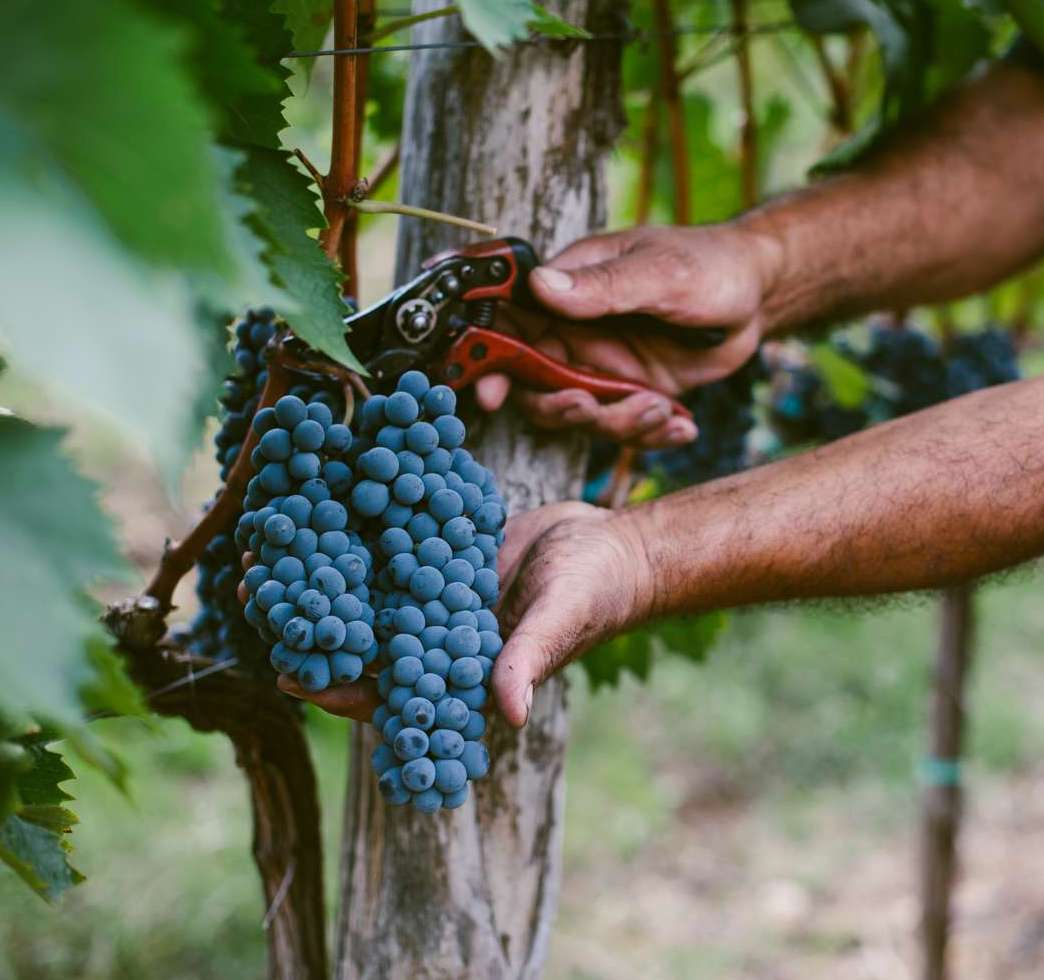
Harvesting or picking is the first step in wine making. Grapes are the only fruit that reliably produce enough sugar for sufficient alcohol and have the necessary acids, esters, and tannins to make stable wine consistently. Therefore, most winemakers believe that wine is made in the vineyard. The timing of the harvest is determined by a combination of science and tasting, with input from consultants, winemakers, vineyard managers, and proprietors. Harvesting can be done mechanically or by hand, but hand harvesting is preferred by many estates to avoid damage to the grapes and vineyard. After harvest, reputable winemakers sort the grapes by hand to remove any rotten or under-ripe fruit before crushing.
Crushing
After harvesting, the next step in wine making is traditionally crushing fresh ripe grapes. Today, mechanical crushers replace the traditional practice of stomping or trodding the grapes by men and women in barrels and presses. Mechanical presses have improved the quality and longevity of wine, reduced the need for preservatives, and brought a significant sanitary gain to wine making. However, some winemakers still allow fermentation to begin inside uncrushed whole grape clusters before pressing them.
The steps for making white and red wines are essentially the same until the crushing and pressing stage. To make white wine, the must is quickly pressed to separate the juice from the skins, seeds, and solids to prevent unwanted color and tannins from leaching into the wine. In contrast, red wine is left in contact with its skins to extract color, flavor, and tannins during fermentation.
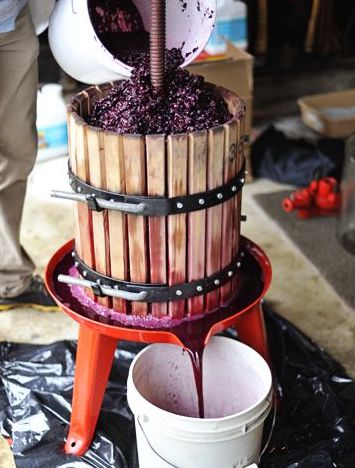
Fermenation
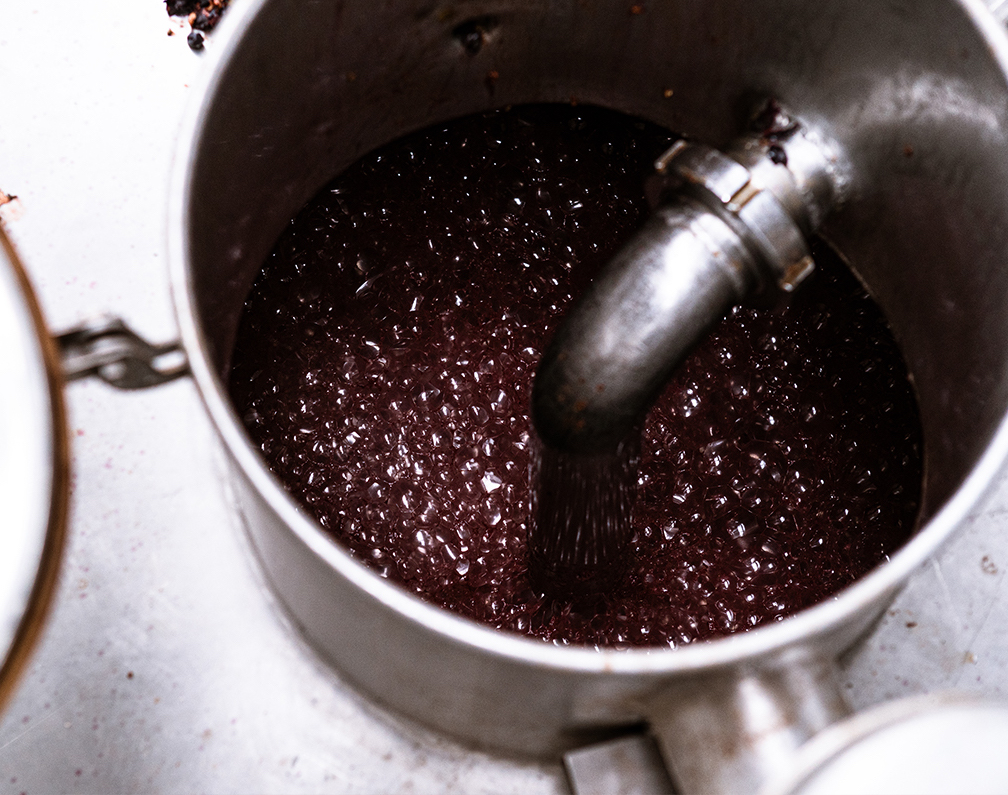
Fermentation is the magic behind making wine, as must or juice will naturally begin fermenting within 6-12 hours with the aid of wild yeasts in the air. While natural fermentation is welcomed in clean, well-established wineries and vineyards, many winemakers prefer to intervene at this stage by introducing a strain of yeast of personal choosing, to better predict the end result.
Once fermentation begins, it normally continues until all the sugar is converted to alcohol and a dry wine is produced. Fermentation can last anywhere from ten days to a month or more, depending on the sugar content of the must. The resulting alcohol level in wine varies depending on the locale, with cool climates producing wines with an alcohol level of around 10%, and warmer areas producing wines with up to 15% alcohol. If the fermentation process stops before all the sugar has been converted to alcohol, sweet wine is produced, which is usually a conscious decision made by the winemaker.
Clarification/Filtering
After fermentation is complete, winemakers clarify their wine by racking or siphoning it from one container to another, leaving the solids at the bottom of the original tank. Filtering and fining are also commonly used at this stage to remove solids and clarify the wine. Filtering can be done with a variety of filters that catch solids, while fining agents such as egg whites or clay are added to help remove unwanted solids by forcing them to the bottom of the tank. The clarified wine is then transferred to another vessel and is ready for bottling or further aging.
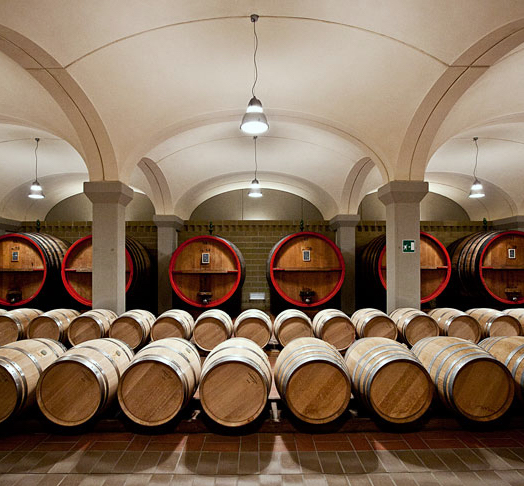
Aging and Bottling
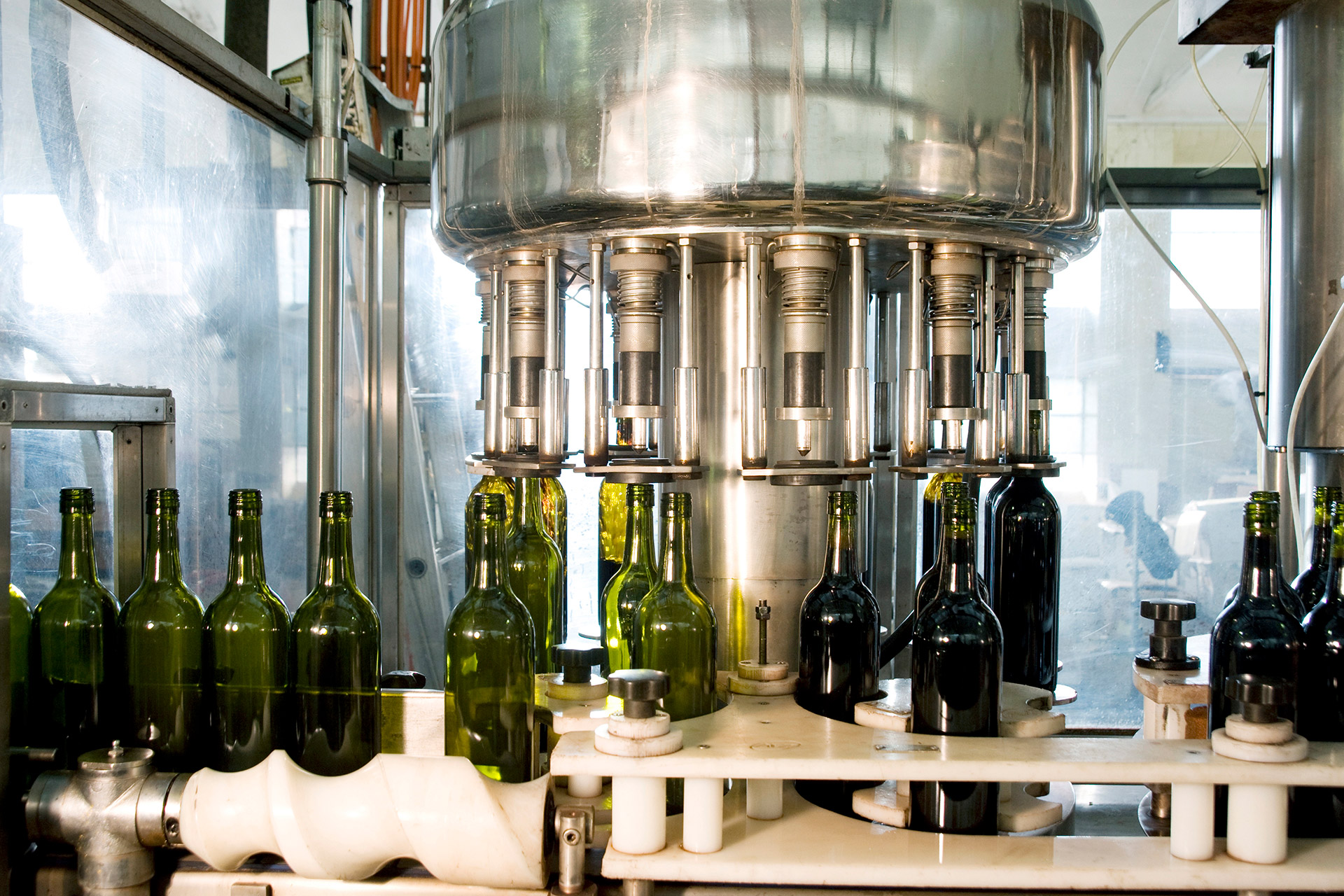
The last step in the wine making process involves the aging and bottling of the wine. Once the wine is clarified, the winemaker can either bottle it immediately, as in the case of Beaujolais Nouveau, or they can opt to give it additional aging, as is often done with Grand Cru Bordeaux and Napa Valley Cabernet Sauvignon. Additional aging can be done in a variety of vessels, such as bottles, stainless steel or ceramic tanks, large wooden ovals, or small barrels known as barriques. The techniques used in this final stage of the process are diverse, and the end results can vary widely. However, in all cases, the result is wine.
Main Grape Varieties [4]
White Wine Varieties
Chardonnay
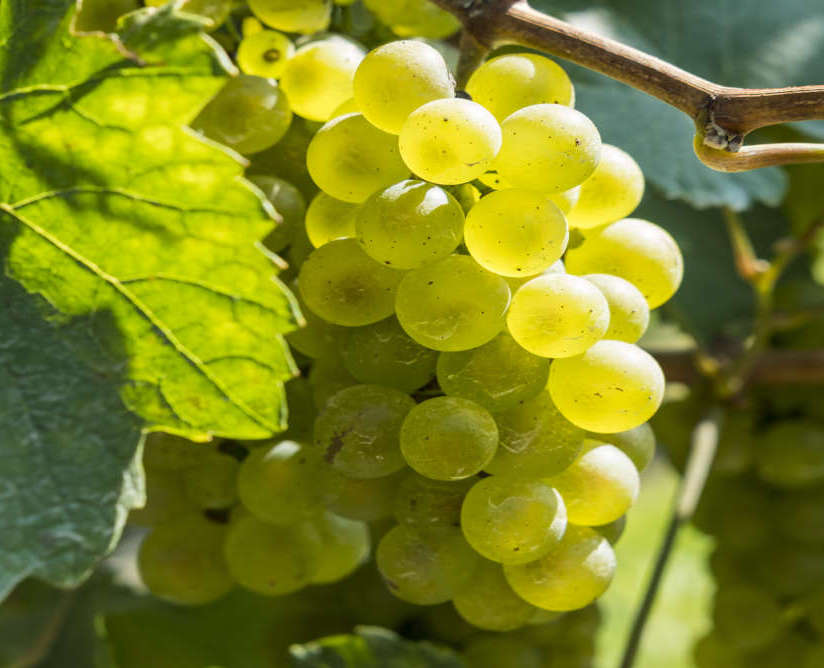
Tastes Like
- Apple
- Tropical Fruit
- Honeysuckle
- Melon
- Buttery
- Creamy
Chardonnay might be one of the most known wines. It is a versatile white wine that is able to showcase the unique characteristics of the region where it is produced, as well as the winemaking techniques used. It is grown in many of the world's major wine regions due to its ability to thrive in a variety of climates. While the grape itself has relatively neutral flavors of apple, winemakers can use various techniques such as oak aging, malolactic fermentation, and lees stirring to add complexity and depth to the wine. These techniques can impart flavors of vanilla, toast, toffee, and creamy lactic acid.
Sauvignon Blanc
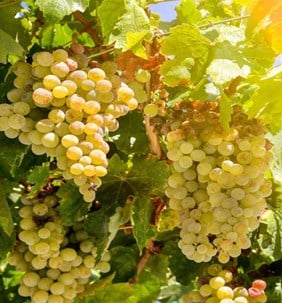
Tastes Like
- Gooseberry
- Passionfruit
- Citrus
- Peardrops
- Fresh-cut grass
- Tropical
Sauvignon Blanc, a highly appreciated white wine, is known for its lively and aromatic character, making it a favorite among wine lovers worldwide. This versatile grape is widely grown in various regions, resulting in a range of unique expressions. Although the New Zealand Sauvignon style, with its distinctive tropical-fruit flavors, has gained tremendous popularity and can be found on virtually every wine list, it's worth noting that this is just one of the many different expressions of Sauvignon Blanc. Beyond the well-known Marlborough region, wine enthusiasts can discover the captivating range of flavors and aromas.
Pinot Gris/Grigio
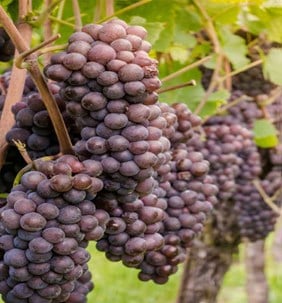
Tastes Like
- White Peach
- Almond
- Grapefruit
- Ginger
- Whtie Flowers
- Apricots
It is likely apparent to you that Pinot Grigio and Pinot Gris are actually identical grapes, but the resulting wine styles can vary greatly depending on the region of production. Pinot Grigio, a popular choice found in most supermarkets, is typically associated with the mountainous areas of Northern Italy. This particular style is light and refreshing, and features delightful citrus, peach, and floral aromas. Pinot Grigio is best enjoyed as an aperitif or paired with salads and creamy cheeses.
Riesling

Tastes Like
- Lime
- Petrol
- Mineral
- Apricot
- Blossom
- Beeswax
Riesling is a somewhat mysterious grape variety. While it exudes an ethereal, floral and captivating character, it also happens to be one of the most robust grape varieties in the world, exhibiting a high level of frost resistance that enables it to flourish in even the coldest climate wine regions. This aromatic grape produces a diverse range of exquisite white wines, with the finest examples aging beautifully over time. As they mature, the wines evolve from their initial floral and lime notes to develop intriguing aromas of kerosene.
Red Wine Varieties
Cabernet Sauvignon
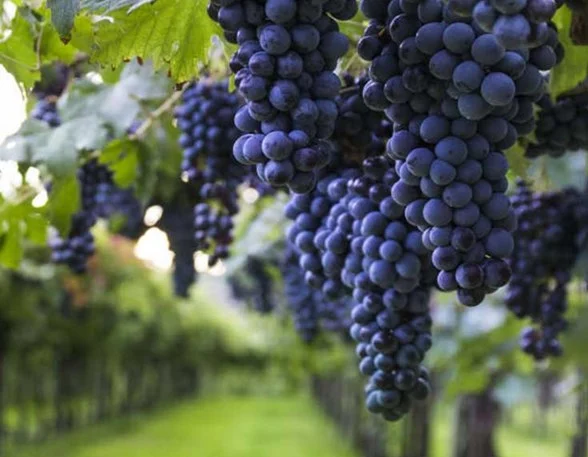
Tastes Like
- Blackcurrants
- Cedar
- Cassis
- Liquorice
- Roasted Coffee Beans
- Green Pepper
Cabernet Sauvignon is a well-traveled and world-renowned grape that produces some of the finest red wines globally, either as a single varietal or blended with other varieties. Unlike many fruit-forward grape varieties, the success of Cabernet Sauvignon as a premium wine lies in its subtleties, which offer secondary and complex flavors that can develop over time in the bottle. This makes Cabernet Sauvignon a "serious" red wine often aged for many years. Nonetheless, younger, fruitier styles of this iconic grape are also available to explore its flavors.
Merlot
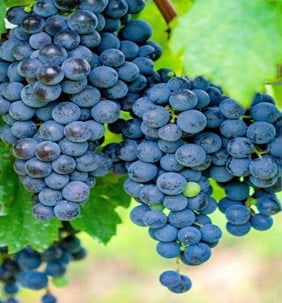
Tastes Like
- Red fruits
- Plums
- Summer pudding
- Chocolate
- Baked figs
- Gentle spices
Merlot is known for its smooth texture and approachable, fruit-forward taste profile, featuring ripe plums, summer fruits, and hints of vanilla and spice. This grape is extremely versatile, used in many affordable daily-drinking reds, as well as some of the world's most expensive wines. When bottled as a single varietal, Merlot produces juicy, plump, and soft red wines. However, it is also a key component in many red wine blends, especially those featuring Cabernet Sauvignon. In these blends, Merlot's friendly and fruity flavor profile balances Cabernet's more prominent tannins and structure.
Pinot Noir

Tastes Like
- Forest fruits
- Gamey
- Cherry
- Violets
- Strawberry
- Forest floor
Pinot Noir, undoubtedly one of the most charismatic grape varieties, can be considered an enigmatic masterpiece. However, achieving the perfect expression of this grape is no easy feat. When handled correctly, it can be sublime, and its seductive allure is unmatched. From its naturally delicate and translucent color to its charming notes of fresh raspberry and juicy cherry in a youthful bottle, to the more mature and gamey aromas that appear with age. Many winemakers consider it as a canvas that they strive to paint with perfection. With its thin skin and delicate nature, it requires special care and attention in the vineyard and winery. The slightest mistake can result in a subpar bottle, but when every element is in perfect harmony, the wine produced can be magical.
Syrah/Shiraz
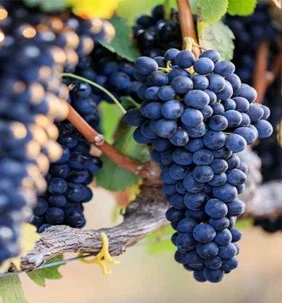
Tastes Like
- Black fruits
- Spice
- Brambles
- Black pepper
- Plums
- Leather
he black grape variety, known as Shiraz in the New World and Syrah elsewhere, is regarded as one of the most prestigious among its peers due to its ability to yield deeply hued, full-bodied, and long-lasting wines. Its flavor profile comprises of luscious and intense notes of blackberry, black plums, and blackcurrant, while warmer regions exhibit spicy, coffee, leathery, and liquorice nuances, and matured wines often develop earthy and truffle notes.
Fun Facts
- You have probably never met one, but apparently some people are scared of wine. It is called Oenophobia.
- The world's oldest bottle of wine was found near the tower of Speyer, Germany. It dates back to before A.D. 325 and is on display at the town's historical museum.
- There are 11 bottles sizes, from the 187ml 'split' to the Nebuchadnezzar, which holds the equivalent to 20 standard bottles.
- There are around 1,300 varieties of grapes that are used to produce wine.
- A "magnum" bottle of wine is the equivalent of two standard bottles, some claim that it is the optimal size of aging thanks to the reduced space of oxygen.
Reference